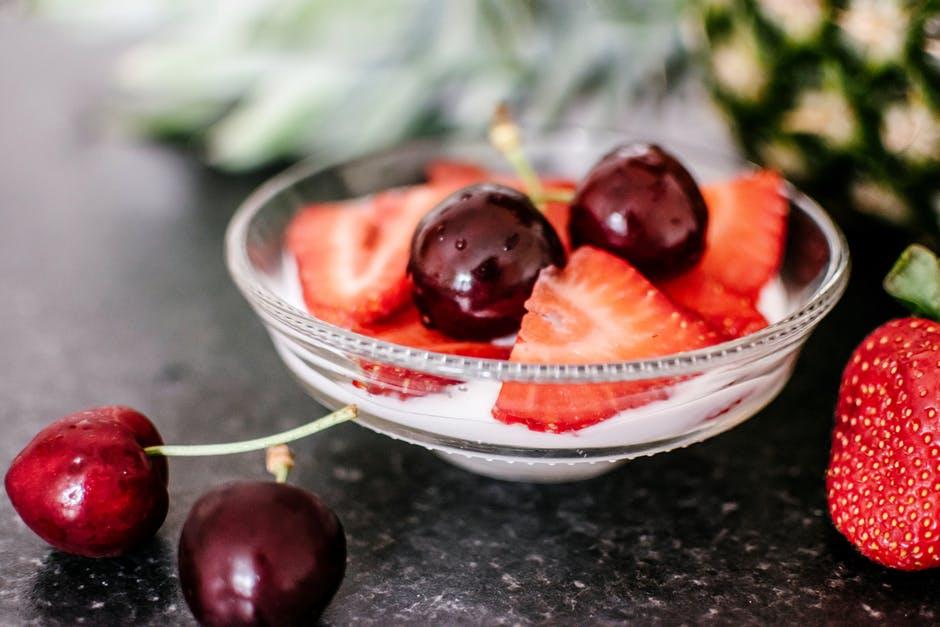How to Use the Rule of Thirds in Food Photography
The composition and the rule of the thirds are the second things that you have to be aware of in order to make good photos of food; the first is to learn to use the manual mode of your camera. Do not panic! In this article you will learn how to take advantage of the rule of thirds so that your photos capture more attention.
In photography, the arrangement of all the elements within the frame is essential. The distribution must be natural, balanced and not detract from the main subject: food. Among all the rules of composition the rule of thirds is the most used both in photography and in painting and design. It is also probably the easiest to implement in your photos. As you might know, it consists of a grid that divides the image into thirds and the idea is that we place the main element of the photo in one of the thirds, on the lines of the thirds or on the points of intersection that are capturing more attention. What you are going to emphasize must be placed in one of those four strong points. The big "no no" is the center of the photo, but there are exceptions. Do not worry if at first you do not identify well through the viewfinder or the screen of your camera where these imaginary points are located. It's normal at first to bother you a little, but over time you'll be getting practice. Some of the SLR cameras bring some guides in the viewer that will help you take the references you need.

The most important elements that you have to take into account are the lines and points of intersection or also called points of interest. The lines are very powerful and work great for photos of elongated elements. On the other hand, the points are the places where we look first when we see a photograph and therefore the photos where the main element is located in one of them catch our attention more. This does not mean that, for instance, the plate has to be just above a point or a line of thirds, whose “fence” is sufficient for the rule of thirds to apply. We can also combine the power of lines and dots in a photo that no one can resist looking at.
An easy way to explain it is to think about creating a static or dynamic photograph. If you center the plate in the photo it gives a static and formal feeling, which can be a bit boring. Whereas if you put the main element on the lines or points of the thirds creates a more dynamic photo, the rule of thirds creates suspense and awakens more interest in the observer. That's what we want, right?
The rule of thirds is a simple means of approaching the golden ratio, and which deals with the distribution of space within the image that generates a greater attraction with respect to the center of interest. With the rule of thirds you will manage to give your photographs a sense of depth and you will achieve a greater balance, guiding the viewer's eye directly to the point of greatest interest. In gastronomic photography, this is something everyone wants to achieve.
You just have to keep an eye on Instagram photos to realize that the rule of thirds is repeated in 8 out of 10 photos. We like the photos where it is applied and sometimes we even apply the rule of the thirds without realizing it and we are super surrounded by it. Now that you know how it works, you will surely find many more photos where this rule has been used. The rules in photography are like a kind of help to guide us towards better photographic results, that's clear. But once you know them, once you know how to apply them and take full advantage of them, the time will come for you to judge whether your next image has to be subject to it or, on the contrary, you will break that rule and show a new vision by using your creativity.
Since 2009, PhotographyTalk has been helping the world take better photos. Their mission to empower photographers of all skill levels to achieve their potential has been fulfilled by making learning about photography an easier and more accessible process. They have been featured in Huffington Post, Inc. Magazine, Forbes and many more.
In photography, the arrangement of all the elements within the frame is essential. The distribution must be natural, balanced and not detract from the main subject: food. Among all the rules of composition the rule of thirds is the most used both in photography and in painting and design. It is also probably the easiest to implement in your photos. As you might know, it consists of a grid that divides the image into thirds and the idea is that we place the main element of the photo in one of the thirds, on the lines of the thirds or on the points of intersection that are capturing more attention. What you are going to emphasize must be placed in one of those four strong points. The big "no no" is the center of the photo, but there are exceptions. Do not worry if at first you do not identify well through the viewfinder or the screen of your camera where these imaginary points are located. It's normal at first to bother you a little, but over time you'll be getting practice. Some of the SLR cameras bring some guides in the viewer that will help you take the references you need.
The most important elements that you have to take into account are the lines and points of intersection or also called points of interest. The lines are very powerful and work great for photos of elongated elements. On the other hand, the points are the places where we look first when we see a photograph and therefore the photos where the main element is located in one of them catch our attention more. This does not mean that, for instance, the plate has to be just above a point or a line of thirds, whose “fence” is sufficient for the rule of thirds to apply. We can also combine the power of lines and dots in a photo that no one can resist looking at.
An easy way to explain it is to think about creating a static or dynamic photograph. If you center the plate in the photo it gives a static and formal feeling, which can be a bit boring. Whereas if you put the main element on the lines or points of the thirds creates a more dynamic photo, the rule of thirds creates suspense and awakens more interest in the observer. That's what we want, right?
The rule of thirds is a simple means of approaching the golden ratio, and which deals with the distribution of space within the image that generates a greater attraction with respect to the center of interest. With the rule of thirds you will manage to give your photographs a sense of depth and you will achieve a greater balance, guiding the viewer's eye directly to the point of greatest interest. In gastronomic photography, this is something everyone wants to achieve.
You just have to keep an eye on Instagram photos to realize that the rule of thirds is repeated in 8 out of 10 photos. We like the photos where it is applied and sometimes we even apply the rule of the thirds without realizing it and we are super surrounded by it. Now that you know how it works, you will surely find many more photos where this rule has been used. The rules in photography are like a kind of help to guide us towards better photographic results, that's clear. But once you know them, once you know how to apply them and take full advantage of them, the time will come for you to judge whether your next image has to be subject to it or, on the contrary, you will break that rule and show a new vision by using your creativity.
Since 2009, PhotographyTalk has been helping the world take better photos. Their mission to empower photographers of all skill levels to achieve their potential has been fulfilled by making learning about photography an easier and more accessible process. They have been featured in Huffington Post, Inc. Magazine, Forbes and many more.








0 comments